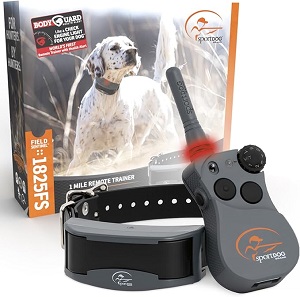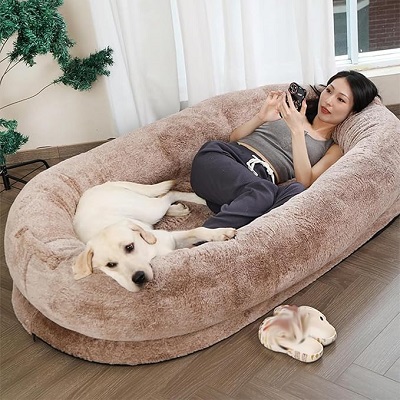
The Best Ways to Calm an Anxious Dog
The Best Ways to Calm an Anxious Dog: Effective Strategies and Tips
Introduction
Dealing with an anxious dog can be challenging for both pets and their owners. Whether your dog experiences anxiety due to loud noises, separation, or unfamiliar environments, it’s essential to provide them with the tools and techniques to feel more secure and relaxed. In this article, we’ll explore the best ways to calm an anxious dog, offering practical solutions and tips to help your furry friend feel at ease.
1. Understand the Root Cause of Anxiety
Identify Triggers
Before you can effectively address your dog’s anxiety, it’s crucial to understand what causes it. Common triggers include loud noises (like thunder or fireworks), separation from their owner, changes in routine, new environments, and encounters with other animals or people. Keeping a journal of your dog’s behavior can help you identify patterns and specific triggers.
Seek Professional Help
If your dog’s anxiety is severe or if you’re unsure of the root cause, consider consulting a veterinarian or a certified dog trainer or behaviorist. They can help assess your dog’s behavior, provide insights, and recommend appropriate strategies tailored to your pet’s needs.
2. Create a Safe Space
Essentials for Your Newly Adopted Pet
Welcoming a shelter pet into your life is a beautiful journey. Here are some handpicked items to help your new friend feel safe, loved, and right at home:
Designate a Comfort Zone
Provide your dog with a designated safe space where they can retreat when feeling anxious. This could be a cozy bed in a quiet corner of your home or a crate with their favorite blankets and toys. Make this space inviting and comforting, using familiar scents and items that make your dog feel secure.
Use Calming Products
Consider incorporating calming products into your dog’s safe space. Items like anxiety wraps, calming pheromone diffusers, or white noise machines can help create a soothing environment that reduces anxiety levels. Calming treats or supplements, formulated with natural ingredients like chamomile or L-theanine, can also be beneficial.
3. Practice Positive Reinforcement Training
Teach Relaxation Cues
Training your dog to respond to relaxation cues can help them learn to calm themselves during stressful situations. Use commands like “settle” or “place” and reward them with treats and praise when they successfully relax in their designated space. This positive reinforcement can build a strong association between the cue and relaxation, helping your dog feel more secure.
Gradual Exposure to Triggers
For dogs with specific anxiety triggers, gradual desensitization can be effective. Start by exposing your dog to the trigger at a low intensity (e.g., playing recordings of thunder at a low volume) and gradually increase exposure as they become more comfortable. Always reward calm behavior and be patient with the process.
4. Establish a Routine
Create Consistency
Dogs thrive on routine, and having a predictable schedule can help reduce anxiety. Establish regular feeding times, walking schedules, and play sessions to provide your dog with a sense of stability and security. Consistency can help your dog feel more at ease, knowing what to expect throughout the day.
Engage in Regular Exercise
Physical activity is crucial for a dog’s mental and emotional well-being. Regular exercise can help burn off excess energy and reduce anxiety levels. Take your dog for daily walks, engage in play sessions, or explore new environments together to keep them physically active and mentally stimulated.
5. Utilize Calming Techniques
Massage and TTouch
Gentle massage and TTouch techniques can help calm an anxious dog. Start by petting your dog in slow, soothing strokes and pay attention to their body language. Focus on areas like the neck, back, and ears, which can help promote relaxation. TTouch involves using specific hand movements to soothe and calm dogs, making it a valuable tool for anxious pets.
Practice Deep Breathing
Dogs can sense their owners’ emotions, so practicing deep breathing techniques can help create a calm atmosphere. Take a few deep breaths before approaching your anxious dog, and encourage them to breathe deeply with you. This can help both you and your dog feel more relaxed and connected.
6. Consider Professional Help
Behavioral Therapy
If your dog’s anxiety persists despite your efforts, it may be time to consult a professional dog trainer or a veterinary behaviorist. They can provide tailored strategies and techniques to help your dog cope with anxiety effectively.
Medication Options
In some cases, medication may be necessary to help manage your dog’s anxiety. Consult your veterinarian to discuss potential medication options, such as anti-anxiety medications or natural supplements, to support your dog’s emotional well-being.
Conclusion
Calming an anxious dog requires patience, understanding, and a combination of techniques tailored to your pet’s specific needs. By identifying triggers, creating a safe space, establishing routines, and practicing positive reinforcement, you can help your dog feel more secure and relaxed. If anxiety persists or worsens, seeking professional guidance can provide the support necessary for both you and your furry friend. Remember, a calm and happy dog leads to a more enjoyable life for everyone!
Affiliate Products
We may earn a small commission when you shop through our links — it helps us keep sharing love and care for every dog out there, at no extra cost to you.
Up to 75% Discount

Dog Collar with Health Monitoring
BUY NOW »
Up to 55% Discount

Luxury Faux Furhuge Napping Bed
BUY NOW »

